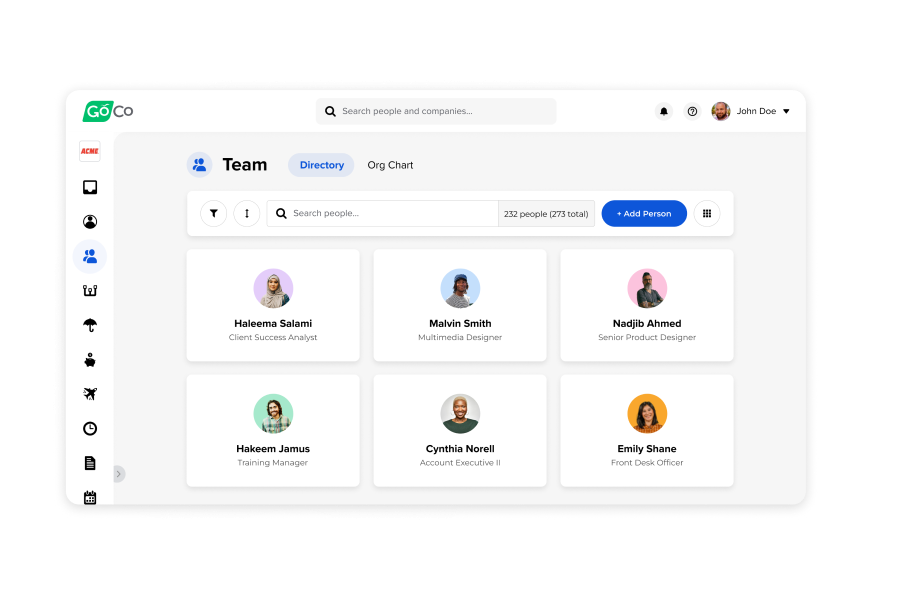How To Prevent Employee Burnout
Learn how to use a preventative approach to addressing employee burnout.
by Nick Schurk - December 21st, 2023
Employee burnout. We all hear about this new workplace epidemic, but what is it? It can show up with physical, mental, and emotional symptoms. You might feel exhausted, depressed, irritated, critical, and feel a disruption to your regular sleep. Headaches? Upset stomach? It could all be related to burnout!
A Gallup study showed that 23% of employees feel burned out often, and an additional 44% feel burned out sometimes. Because of this, companies are realizing that it can lead to dips in productivity and retention, and it can eventually cost them more in high healthcare bills.
What causes employee burnout?
To prevent employee burnout, you’ll need to understand what causes it. Most employers believe it's caused by unmanageable workloads—and yes, high workloads are a contributing factor to employee burnout, but they’re not the only cause. Other reasons include:
Lack of communication or support from leaders: Leaders who provide vague instructions or are often unavailable to support their employees can cause additional and unnecessary stress for their employees.
Unfair treatment: Leaders may be unfairly distributing workload, leading to additional stress for employees who fear to say “no” to additional work that is beyond their capacity or high achievers who pick up the slack of less competent teammates.
Unreasonable deadlines: The pressure to deliver results under rigid deadlines can lead to stress.
Blurred boundaries between home and the workplace: The increasing pressure to answer texts or emails outside of work hours can create stress as employees can no longer disconnect easily. This is amplified by leaders who frequently send communications after-hours or work on vacation.
Lack of autonomy: If an employee can’t influence or choose their schedule, assignments, or workload, they are likely to begin to feel burnout.
Unclear job expectations: If an employee is unclear about what their leaders expect, or if the role that they’ve taken on is very different from what they expected when they joined, they are unlikely to feel comfortable in the workplace and are more likely to burn out quickly.
How can employers prevent employee burnout?
Employers should focus their philosophy on prevention—and you can start during the onboarding process, when the employee is still learning about the company’s culture, alleviating the factors mentioned above can reduce the likelihood that burnout will occur.
Encourage Paid Time Off
Many employees do not utilize their sick or vacation days because they believe it will reflect poorly on their performance.
The lack of communication about a vacation policy can deter employees from taking PTO. You can send the company’s vacation policy as part of a new employee’s onboarding package to let employees know it is okay, and expected from them, to use their PTO.You can track their vacations through GoCo, which allows you to monitor time-off requests, balances, and approvals—all without spreadsheets. This will allow you to review who has taken their vacation and who may need a gentle reminder to book their next getaway.
Health Insurance and Wellness Programs
Constantly highlight the resources available to employees through their health insurance and wellness programs. You can send plan documents easily through an HRMS platform like GoCo. You can also use this opportunity to emphasize additional wellness resources, such as fitness perks, financial wellness resources, an Employee Assistance Program, etc.
Job Descriptions
One of the surprising factors leading to burnout is a lack of clarity around role expectations. HR professionals can mitigate this by taking the onboarding experience as an opportunity to clarify these expectations. They can help employees to understand their role and how they will contribute to the organization’s goals. You can include the job description as part of the onboarding package, which you can automate through GoCo.
Final Thoughts
Employee burnout negatively affects employees and employers alike. HR professionals can prevent burnout by highlighting the resources available to employees during the onboarding process, leading to higher engagement and increased employee retention. Utilizing an HRMS platform like GoCo means little to no additional work for HR teams looking to integrate such resources into their onboarding packages.
Updated 12/21/2023

Subscribe to Beyond The Desk to get insights, important dates, and a healthy dose of HR fun straight to your inbox.
Subscribe hereRecommended Posts
2025 Employee Onboarding Checklist [3 Easy Phases]
Blog Articles
Search...
Product
GoCo
Resources
Articles
eBooks
Webinars
Customer Stories






